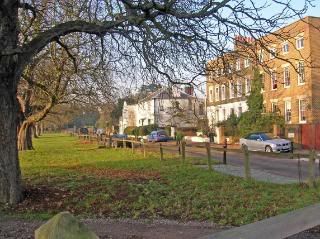
According to his will, John Newbery held an extensive amount of property within Hampton Court Manor, and more property in the nearby parish of Kingston upon Thames. His will refers to the “messuages or tenements, coach house, stable, outbuildings and offices with the appurtenances thereunto belonging” of a number of properties, some with “yard garden” or “kitchen garden” specifically mentioned.
Most of these properties were held under the system of customary tenancy, known as copyhold, because the tenancy of land was noted in the Court Rolls and a copy was given to the new tenant after the previous tenant had died. The title to the property was surrendered to the Lord of the Manor, who then gave them to the use of the Executors. On the death of John Newbery, the Executors are then charged with passing the properties on to the family members designated in the will. The language used in the will reflects this system: “at a Special Court Baron…[I] surrendered into the hands of the Lord of the Manor House and Manor, all the said premises”.
We initially had a look at Hampton Court House, which was the manor house referred to in the will.
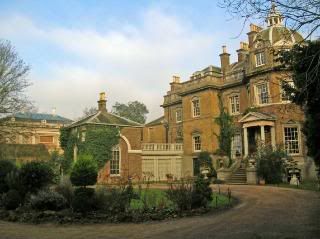
As you can see, this house was a fairly imposing edifice, complete with formal gardens, stables (pictured below), a carriage sweep in front of the manor house (pictured above), and all the trappings one would expect to find in a manor house. The Lord of the Manor, or his agent, would have lived in this house.
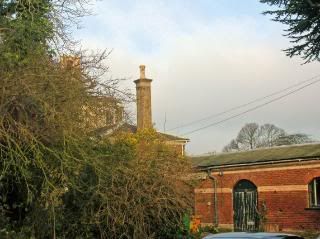
The main property held by John Newbery under the above copyhold system is described as comprising “two capital messuages or tenements…two coach houses and two stables and other outbuildings”. It was located as part of the “House and Manor of Hampton Court…bounded on the north side by Bushy Park wall and on the south side by the public highway or road leading from Hampton Court to Kingston-upon-Thames”. The will specified that these buildings were fronted by Hampton Green, so they proved fairly easy to identify.
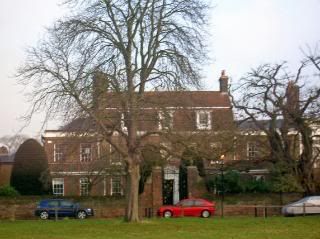
The largest of these houses (see above) was built in the Georgian style, and was presumably the main residence of the family.
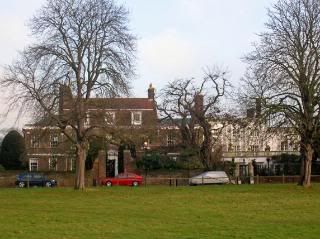
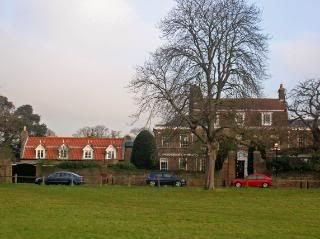
It was flanked by small houses and cottages (see above), which would have comprised the coach houses, stables and outbuildings John Newbery spoke of in his will. Indeed, the original purpose could still be detected in the architectural design of some of them, though all were now in use as residential premises. (Some of them are shown in the pohotos below.)

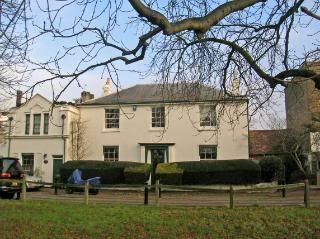
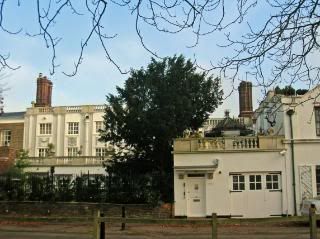
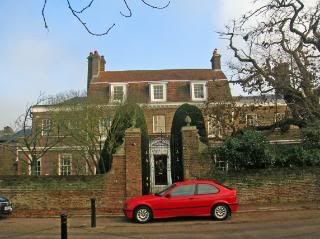
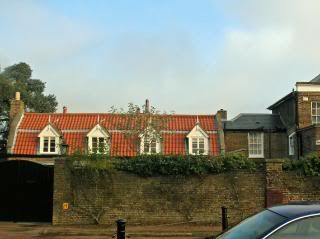
In addition to these premises, the will stated that five cottages had been erected by John Newbery on the south side of the green, While it is probably that most of these had been demolished, there were some buildings that may have been part of the original five.
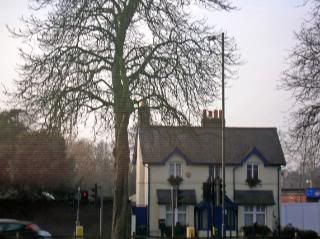
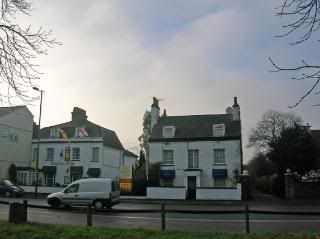
John Newbery left the land and premises on the western end of the property on the north of the Green to his wife, Sarah. After her death, it was to be passed on to his two unmarried daughters, Mary and Barbara. The property on the east side, a “newly erected tenement…with the yard, garden, coach house, stables, outbuildings and offices”, he left to his daughter, Sarah Bachelor Swalling, and granddaughter, Mary Anne Kensett Slade.

Three other properties were given to his remaining three children. He left a Tenement and Malthouse across the river, at Kingston upon Thames in the county of Surrey, to his oldest son, Thomas Newington Newbery (the ancestor of Elizabeth).
John Newbery had built five cottages on land in the Hampton parish known as “Four Hills”; he left this land, with its “cottages, outbuildings, offices and yard gardens” to his son, James Newbery.

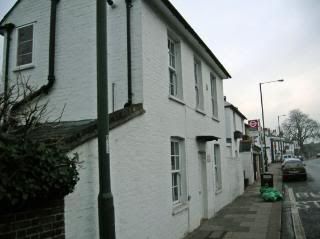
He left another Malthouse, outbuilding and yards “in the hamlet of Hampton Court” to his daughter, Deborah. This malthouse is probably the pub that now stands at the gateway to Bushy Park, as this one was Georgian in origin, and John Newbery does state that he has built most of the house and buildings himself. (This pub is now called the Liongate, but we know from a late 1890s map that it had a different name in the nineteenth century.)
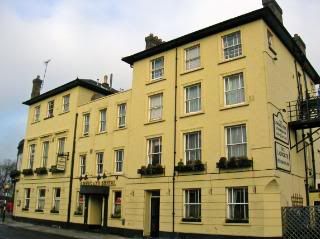

There was however, a slightly older pub (built in the 1700s) across the road which may also be a candidate for Deborah’s malthouse (it is now called The King’s Arms; it also had a different name in the nineteenth century).

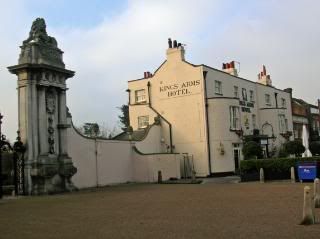
In addition to these copyhold properties, John Newbery held leasehold properties on the north side and south side of Hampton Court, which he bequeathed to his wife, Sarah. After her death, these were to be passed on to three of his daughters, Sarah, Mary and Barbara, and his granddaughter, Mary Anne, in equal parts.
In addition, two further properties were identified in the book that Ian, the helpful palace warden, had shown us. This book, which recounted something of the history of Hampton Court village, showed two houses belonging to John and James Newbery in 1815, located to the east of the Bushy Park gateway, and nestled ‘between the walls’ of Bushy Park.
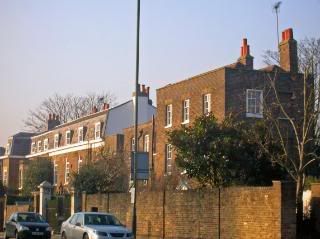
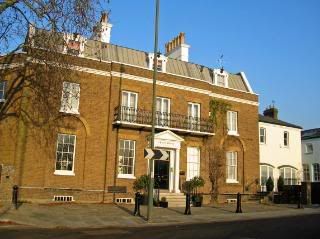
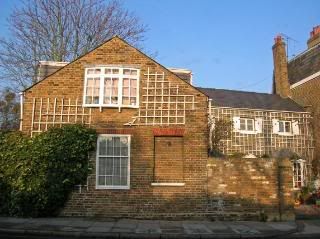
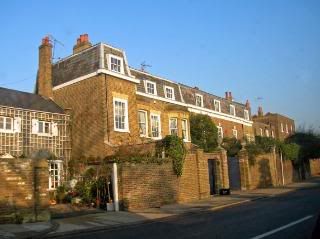
The will of John Newbery (signed on 12 October 1832) establishes that he was an exceptionally wealthy man for his time. How he came by this fortune is the subject of a romantic and interesting tale that was passed down to Elizabeth’s great great grandfather, Frederick William Newbery ,presumably by his father, Thomas Newington Newbery, eldest son of John Newbery.
The tale is told in the following letter, written by Frederick William Newbery on 26 May 1887. The letter was subsequently transcribed by Frederick’s great grandson, Eric William Newbery, in 1980.
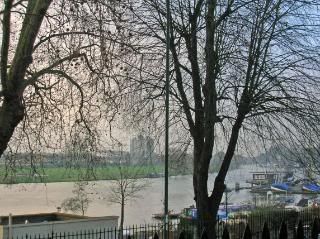
“When I was about ten or eleven years of age my father told my sister and me our grandfather’s history as follows. My grandfather John Newbery and his sis Mary were taken from their home. Mary told my mother the first she could recollect was going in a chaise a very long distance and being placed with her brother John in care of an old woman who lived by herself in a house by the roadside. The house stood alone and was the only one on the country road between Hampton and Sunbury. Mary must have been about five or six years old at this time, about two or three years older than her brother John.
The gentleman who took them away used to go at regular intervals and pay the old woman a sum of money for their support. As the time grew near the arrival of the gentleman with the money was very anxiously looked for. He continued going regularly until the little girl was about nine years of age when his visits were discontinued and when the money didn’t come, the old woman turned them out to do the best they could.
The way they took was through Hampton and on to Hampton Court. As they went along crying they were met by a kind gentleman who asked them what was the matter. The little girl told him that they had no father nor mother and that the old woman with whom they had been staying had turned them out when she no longer received any money for their support. He asked them where they were going and finding that they had no place to go he took them to his own home. Mary was put into the kitchen to assist the cook and John was made errand boy. All the gentry around took a great interest in the orphans. Grandfather was called civil John.
When John was thirteen years of age the gentleman he was living with wanted to go to India and very much wished John to accompany him but couldn’t prevail upon him to do so. He therefore determined to do something for him before he went. He took a place suitable for wood and coal and furnished it with a supply of both also providing him with two horses and a cart.
He then went around to all the gentry and asked them to deal with him which they all promised to do. Then came another supply of coal and wood and a quantity of hay and corn as well as plenty of wealthy customers so a good business was established at once. John took the two houses on the opposite side of the green and built two granaries on the front for storing his goods. No-one had any idea from what locality the children had come.”

John Newbery was presumably buried in the churchyard of the parish church at Hampton Court (the church of St Mary the Virgin), though we were unable to discover a tombstone for him there. Many of the headstones had been removed, or were overgrown and illegible.
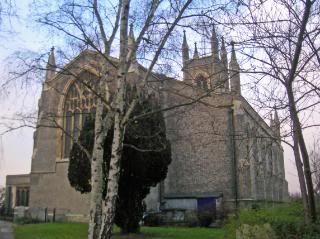
So, John Newbery remains a man of mystery as well as a man of wealth for the moment, which made his houses just that little bit more interesting. John and Elizabeth now plan to try and follow up this mystery, and hopefully discover something of the origins behind the family.


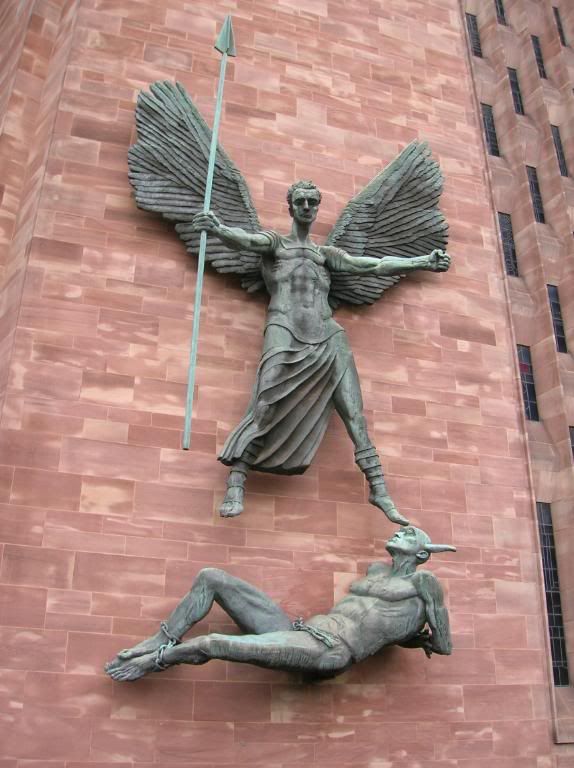

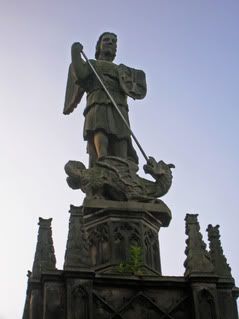
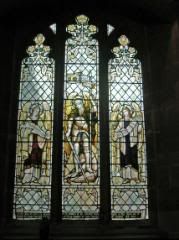
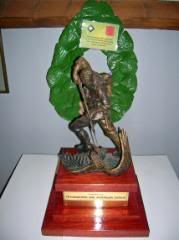
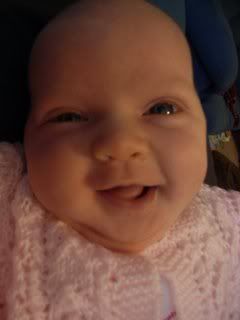
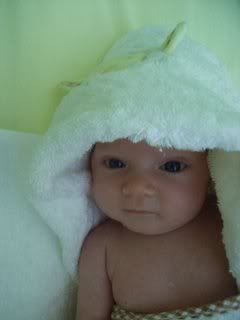
1 comment:
Great work.
Post a Comment